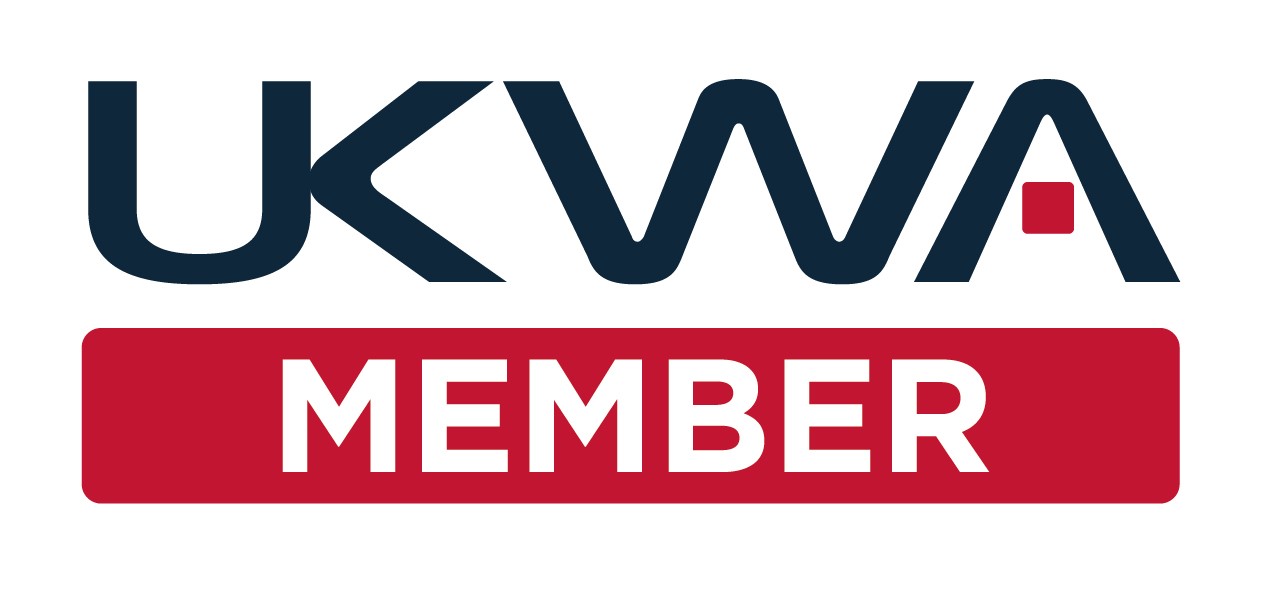The Challenges Facing Warehouse Management
The Challenges Facing Warehouse Management
The Challenges Facing Warehouse Management
The importance of WMS
The complex and dynamic challenges of managing a warehouse in the era of 21st century eCommerce have elevated Warehouse Management to a specialist practice of organising, managing, and maintaining a multitude of daily processes that cannot be messed up without severe consequences, or even threatening business survival. Ever-increasing consumer demands and expectations, coupled with the proliferation of sales and delivery channels, combine to make warehouse operators value flexibility and time-to-value in their warehouse technologies.
Avoiding costly mistakes
Because each process and activity is interlinked with all the others, even a relatively small error in one area of warehouse management can have devastating ripple effects elsewhere in the supply chain.
Finding WMS and ERP solutions
To ensure sustainability, profitability and growth, a reliable and up-to-the-minute Warehouse Management System will revolutionise your business dynamics and overcome most, if not all, your warehouse management challenges and ensure virtually error-free warehouse operations.
These automated systems help you to introduce robust, flexible and scalable processes; quickly identify and correct errors; forecast erratic demand, labour requirements, and changing business environments; monitor developments and adopt responsive solutions; and sustain best industry practices.
Solving core challenges in warehouse management
1. Inventory Inaccuracy
One of the greatest challenges facing warehouse operators is the accuracy of inventory. Increasingly high expectations from customers place tremendous pressure on warehouses to keep accurate track of inventory at each stage in the supply chain and report levels in real-time.
Inaccurate inventory monitoring and tracking lead to improper stock levels, obsolete inventory, mistakes in picking and fulfilling orders, delayed shipments, failed deliveries, cancelled or returned orders, low productivity, increased expenses, and loss of revenue and profitability.
Manual, outdated software and less-than-optimal processes of updating inventory data waste a lot of time and money in physical checks and error correction.
Automated cloud-based software solutions have become indispensable, offering real-time information through APIs and integrations, enhancing inventory accuracy, visibility, cost-effectiveness, and efficiency.
2. Substandard Order Management
Closely related to poor inventory accuracy, flawed order management can lead to errors along the supply chain, from procurement all the way to fulfilment and delivery to the customer.
This problem is easily solved by implementing a modern WMS with cohesive channels for procurement, 3PL integration, capacity allocation, methodical picking, packing and shipping, and post-sales processes.
3. Unnecessary or Duplicated Processes.
Eliminating duplication and unnecessary handling will save a great deal on costs and time, leading to greater efficiency and profitability.
Paper-based sorting and picking are easily duplicated by different teams, especially when there are multiple workflows at the same time, leading to wasted labour costs and time.
Likewise, if the workflow is not efficiently organised and properly communicated, it could lead to lots of people handling the same items at different times in the process. Shortages or overproduction/ordering can occur, or items could be damaged, lost or misplaced.
The solution is to invest in a modern WMS software system that keeps up with technological advances and integrates with barcoding and scanners. It should issue efficient picking instructions and automatically update inventories, workflow, deliveries, invoices, payments, etc.
Other benefits include streamlining all your processes, optimising warehouse layout, picking efficiency, and inventory management, while securely providing instant real-time warehouse management information anywhere on a smart device, full visibility, and complete control at all times.
4. Using Outdated Processes and Equipment.
Technology is advancing at a breathtaking pace, and business dynamics have changed dramatically in the last decade, making software dating from just a few years ago obsolete.
Every warehouse will have its own logistics and workflow requirements, but warehouse managers can no longer cope without maximising real-time data-driven business practices to meet the demands of a changed and still-evolving market.
It is a sad fact that some warehouses are still trying to cope with paper-based systems or spreadsheets. While this was probably the best available at the time, today that would be comparable to taking six months to reach your destination on a sailing vessel or steamboat when you can get to your destination in only hours, for much less, in an aeroplane.
Time-consuming manual data entries; excessive handling of products; inventory errors, shortages, or overstocking; redundant or obsolete stock, and an inability to judge orders for seasonal demands, are only a few of the headaches brought on by systems and processes that have not kept pace with new developments and market demands.
The latest cloud-hosted SaaS WMS applications are updated virtually on a day-to-day basis and can be customised to your needs, and cater for all types of warehousing and multiple product types. Complete information is available in real-time on a smart device, from anywhere, to streamline processes and to help you make business decisions. Errors are all but eliminated and a great deal of time and labour is saved.
Audits and stocktaking are no longer the bane of your life either. With barcode or RFID scanners updating inventory, regular cycle counts can be programmed and an audit or stocktake can be completed in a fraction of the time, with very little chance of error. When errors do occur, there are checks and balances built into the software to easily recognise and correct errors.
Modular systems are accessible to warehouses of all types and sizes and you only pay for what you need, allowing you to upscale for seasonal demands and downscale when you no longer need all the features. It is easy to implement and can be up and running in a very short time, with hardly any downtime.
5. Poor Warehouse Layout
A good warehouse layout optimises cost-effective storage space; reduces errors; improves visibility; streamlines putaway, includes optimisedroutes for picking and order fulfilment, and lessens the potential for accidents.
WMS software identifies space that is not fully utilised, calculates accessible space allocation vertically and horizontally according to size and weight and maps it out in 3D, records obsolete inventory that is taking up valuable space. Inventory can be located instantly according to order numbers, barcodes, type and description, pallets, cartons, accessibility, batch numbers, expiry or sell-by date, relevance, etc.
All of this translates to greater efficiency, cost and time savings, better stock control and inventory tracking, meeting deadlines, faster turnover, and reduced damage and loss.
6. Workplace Safety
In addition to operational warehouse layout for efficiency, WMS software can significantly improve workplace safety. For instance, it can mitigate the risk of accidents by creating an organised and uncluttered workspace; calculating forklift paths, and traffic flow to avoid congestion. It can further calculate the distance items have to be carried or transported to minimise strain, and issues picking and loading instructions to minimise safety risks.
A Warehouse Management System can also schedule safety training and refresher courses at regular and appropriate times to minimise disruption at busy times. It can also automatically include safety precautions in picking and loading instructions.
7. Poor Preparedness for Erratic or Seasonal Demands
Running out of stock is a quick way to lose return customers, while on the other hand, excess stock can lead to high carrying costs. WMS solutions help you find the balance between supply and demand, forecasting and planning for fluctuations during different seasons or events such as large-scale sporting events, celebrations, and holidays when sales spike, or financial crises causing sales to drop.
Other logistical factors and challenges, such as the availability of products, delivery challenges, or labour shortages during peak periods or strikes, should be anticipated and planned for, using the WMS features.
Coordinating your WMS software with supply chain partners ensures accurate data is maintained and communicated, enabling all parties to work together seamlessly in meeting the challenges of demand fluctuations.
8. Cost of Poor Resource Management
The workforce, ranging from the warehouse manager to administrative staff, specialist workers like forklift operators, shipping experts, stock clerks, stock pickers, and packers; through loaders, cleaners, and general workers, is usually the most expensive resource and greatest management challenge.
Next in line is getting the most out of equipment and machinery. The warehouse manager can only achieve the utmost productivity and profitability by optimising all the expensive resources, using WMS software to programme tasks and activities in the most time- and cost-effective manner.
9. Quality Control
Often the same person is responsible for picking, packing, shipping, and quality control, leading to errors such as damaged, defective, incorrect, or poorly packaged products, which are only discovered once the items have been delivered to the customer, causing embarrassment, time lost, and additional costs.
A separate level of quality control, coordinated on your WMS software, will ensure better supply chain control, vendor accuracy, stock rotation, and inventory management.
10. Poor Damage Control
With thousands of items being handled daily, the risk of damage is unfortunately quite high, but proper procedures and analysis of the causes can drastically reduce losses and injuries.
Here are some suggestions to manage the problem:
- Issue protective clothing and install protective equipment, such as pallet rack protectors, special nets for racks, guard rails, anti-slip tape, low clearance warning bars, safety nets, and accumulation conveyor systems.
- Passageways should be wide enough to allow safe movement for employees, equipment, and inventory. They should be well-lit, and routes should be carefully planned to avoid congestion and accidents.
- Regular inspections to discover structural weakness, overloading or damage to shelves, pallets, storage units, and transportation vehicles. Analysis of the cause of damage will reveal weaknesses which can be rectified.
- Proper warehouse layout will ensure easy access to inventory, eliminating damage when difficult-to-reach items are put away or retrieved.
- Automated recording of inventory movement and damage will instantly reveal the cause of loss or damage.
11. Poor Time Management
Warehouses generate an immense amount of data, which can become unmanageable as the warehouse grows and expands. Keeping accurate records and accessing information about supply chain management, inventory allocation, warehouse layout, picking processes, customer communication, etc. become tedious tasks that bog down the warehouse manager and allow too little time for vital aspects of management.
A WMS that streamlines all the processes and accurately records all data, which is instantly available from anywhere at any time on a smart device, will make the warehouse more efficient and profitable, with effective control and management.
Linked to automation tools such as barcode and RFID technology, voice-to-pick, etc, your WMS will optimise time management and avoid repetition caused by errors.
12. Managing Customer Expectations
Customers have come to expect excellence, particularly in eCommerce where they have a myriad of options to choose from.
In addition to the quality of the products, they demand accurate information and delivery options to suit their needs – such as a specific delivery day or time slot, or the option to save money by selecting a longer delivery time. Furthermore, to develop any kind of loyalty, customers want to feel they are important to your business, making good communication essential. With WMS software, automated communication about the product, order, delivery, and after-sales, goes a very long way towards meeting these demands and putting you in the forefront for returning business.
13. Internal Warehouse Communication
As warehouses expand, it becomes increasingly difficult to communicate effectively with employees and supply chain partners. Public address systems, radios and telephones are no longer sufficient because they are labour-intensive and prone to errors.
One of the most effective ways in which technology can help you improve this is to equip employees with wearable smart interactive devices, linked to the WMS software, to receive accurate instructions, allow for feedback, and receive corroboration to eliminate errors, with minimal manual intervention.
By synchronising your WMS software with that of supply chain partners, you ensure everybody has access to the same information at the same time to coordinate processes.
14. Global Impact
Apart from local difficulties, even remote events, such as COVID-19, global politics, and regional hostilities can disrupt the international supply chain, which in turn will impact hugely on your business and warehouse efficiency. Knowing what the stumbling blocks and challenges are that confront you on a daily basis, and utilising advanced technology, will not only help you prevent mistakes, but it will improve your relevance, productivity, and profitability across industries and continents.
Takeaway: Where to start?
- Identify areas that can be automated to increase efficiency and reduce labour costs.
- Consider the direct and indirect impact of automation on other costs.
- Develop the right mix of expertise and maximise labour input by properly training your workforce in resource management and allocating them to those jobs they can perform best.
- Find the correct WMS software and automated solutions for your warehouse that can either optimise your existing systems, or completely renew the way you run your warehouse, and let costly employees focus on more important strategic tasks.
- Ensure your WMS can be customised to your requirements, and is flexible and scalable enough to be adapted for seasonal demands and business growth. It should provide you with visibility and real-time information, securely accessible on your smart device at any time, from anywhere, to make the best management decisions.
- Use your warehouse management software to seamlessly share data with partners across the supply chain.
- Once you have benefitted from the many advantages and cost savings of good WMS software and automation, invest these savings in even more advanced technology. Consider the value of data capturing devices like barcode scanners, voice-to-pick, RIF scanners; pallet flow rack systems, AGV’s (automated guided vehicles), robotics, automated storage shuttles and cranes; and automated conveying and sorting systems, to help your processes flow better and quicker, further improving your efficiency and profitability.
Here are just some of the features built into WMS software to update your systems:
- Automated tracking from the time of order, through receipt at the warehouse until it is delivered to the customer.
- Monitoring and reporting on productivity, accuracy and efficiency.
- Planning workflow and automatically updating inventory and processes as items are scanned.
- Calculating and directing putaway and storage to optimise space and order picking, including accessibility, safety, and security, and planning routes for picking and delivery to fulfil orders in the most effective way.
- Automated accounting, including billing, sending invoices, recording payments, and reconciling the accounting books.
- Seamless integration with all other software systems and equipment, including those on different platforms.
- Automated inventory control, including alerts when new orders need to be placed and even automating orders when certain stock levels are reached. Features exist that assist in predicting peak periods, seasonal changes, etc.
- Maximising the use of equipment and labour.
- Accessibility to all items, the security of all items
- Absolute security. All data is stored on secure servers in the cloud, with several levels of security which are constantly updated as new threats occur.
Previous Article
Using AI & WMS and the Wider Supply ChainNext Article
The Benefits of Client Web Portals for a 3PL WMSWe'll assume you're OK with this, but you can opt-out if you wish.Accept Reject Read More






